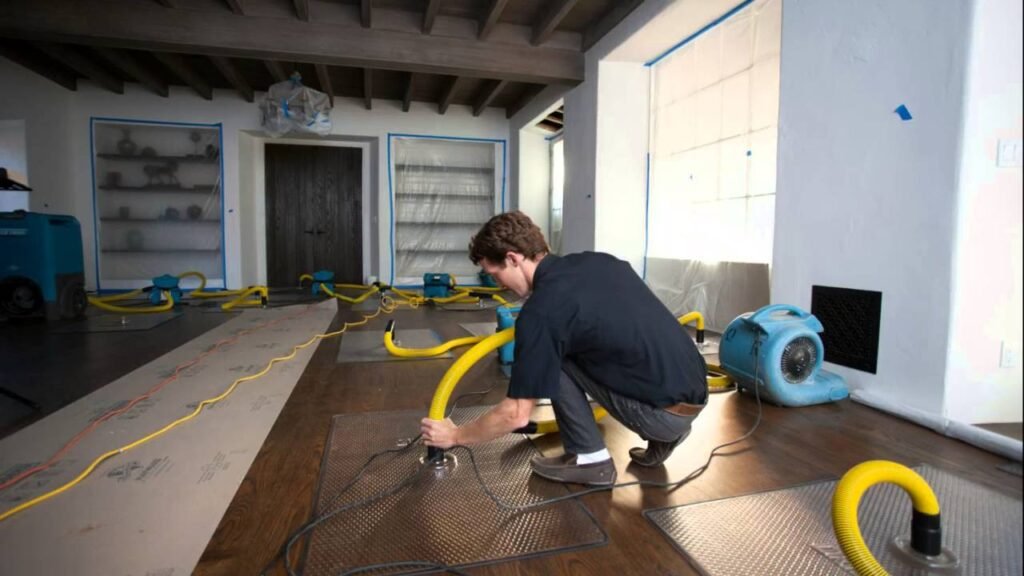Finding the right restoration company after property damage can be overwhelming, especially when time is critical and the emotional toll is high. Whether water damage from a storm, fire, and smoke destruction, or mold growth after flooding, timely response and reliable service are essential.
Homeowners and property managers need a company that shows up and acts efficiently, transparently, and is committed to returning the property to its original condition. We will explore key factors that help ensure your choice results in smooth, timely repairs without unnecessary delays or complications.
Key Factors to Consider When Selecting a Restoration Company
Response Time and Availability Matter Most
Time is a crucial factor in restoration. The longer water, smoke, or structural damage lingers, the more complicated and costly the repairs become. That’s why working with a contractor for water damage restoration in Vancouver that offers 24/7 emergency services and guarantees fast response times is important. Ask how soon they can be on-site after a call and whether they can provide emergency mitigation within hours, such as water extraction or board-up services.
Delays during the first few hours can increase the extent of damage dramatically, especially in water-related incidents. Companies that understand urgency will also have procedures for quick documentation and assessment, which helps begin repairs promptly and supports insurance claims.
Reputation Through Client Experience and Word of Mouth
In restoration work, how a company has treated its past customers often reflects how it will handle your project. Online reviews and word-of-mouth recommendations can shed light on reliability, professionalism, and overall satisfaction.
Look for companies with a strong track record in your community and positive feedback regarding timeliness, communication, and results. While flashy websites and promises can look appealing, direct experiences shared through reviews can reveal positive or negative patterns.
Consistency in delivering quality work and respecting timelines should be visible through these testimonials. Also, consider asking for references or viewing before-and-after photos of recent projects. These insights help form a clearer picture of what to expect when it’s your property on the line.
Licensing, Insurance, and Compliance with Regulations
Any company you invite into your home for restoration should be properly licensed, bonded, and insured. These credentials protect you and your property in case of mishaps, accidents, or incomplete work. More importantly, companies that meet local and state requirements are usually well-versed in regulations regarding environmental cleanup, disposal of hazardous materials, and safety protocols. It’s also wise to confirm whether the company conducts background checks on its employees and technicians.
Ensuring the team working in your home is vetted, qualified, and trained helps reduce risks and gives you peace of mind. Restoration often involves demolition, repair, and possible exposure to biohazards. Working with a compliant company keeps the process safe and within legal boundaries.
Clear Communication and Project Transparency
Restoration isn’t just about rebuilding walls or removing water—it’s about providing clarity in a chaotic situation. Choose a company that communicates clearly and frequently about progress, issues, and next steps. This includes accurate timelines, itemized cost estimates, and transparency regarding what work will be completed and why.
You should never feel left in the dark. Ask how they handle change orders, who your point of contact will be, and what systems they use to track and report job progress. Companies that prioritize communication tend to have smoother workflows and fewer delays. When restoration professionals work hand-in-hand with you, insurance adjusters, and other contractors, everyone stays informed and aligned.
Range of Services and In-House Capabilities
The more services a restoration company offers in-house, the more efficiently they can manage the project from start to finish. Many reputable restoration companies handle everything from emergency mitigation to full-scale reconstruction.
When a company can manage water removal, mold remediation, structural repair, and interior finishing without outsourcing, the risk of delays and miscommunication drops. Ask about their internal capabilities and whether they subcontract any major parts of the job. Coordination becomes more seamless when the same company handles demolition, cleanup, and rebuilding.
Additionally, companies that offer content restoration, such as cleaning and storing damaged furniture or electronics, can save you from hiring multiple vendors, reducing cost and complexity.
Experience with Insurance Claims and Documentation
One of the most stressful aspects of restoration is navigating the insurance process. A reliable restoration company will be familiar with working alongside insurance providers and can help you document damage thoroughly to support your claim. This includes taking detailed photos, preparing written assessments, and maintaining repair logs.
Companies that understand insurance protocols can also help expedite approvals and payment disbursements, helping you return to normal sooner. It’s worth asking if the company provides claim assistance or has experience with your specific insurance provider. Their role is not to act as adjusters but to offer accurate documentation that makes the adjuster’s job easier and more favorable to your claim.
Selecting a restoration company isn’t just about convenience—it’s a decision that directly impacts how quickly and successfully your property returns to livable condition. The right choice blends urgency with integrity, offering fast action without sacrificing quality or cutting corners. From reputation and credentials to communication and in-house capabilities, several factors shape your experience when it matters most. When the unexpected strikes, preparation pays off. With the right team, restoration becomes a path forward, not a prolonged setback.
